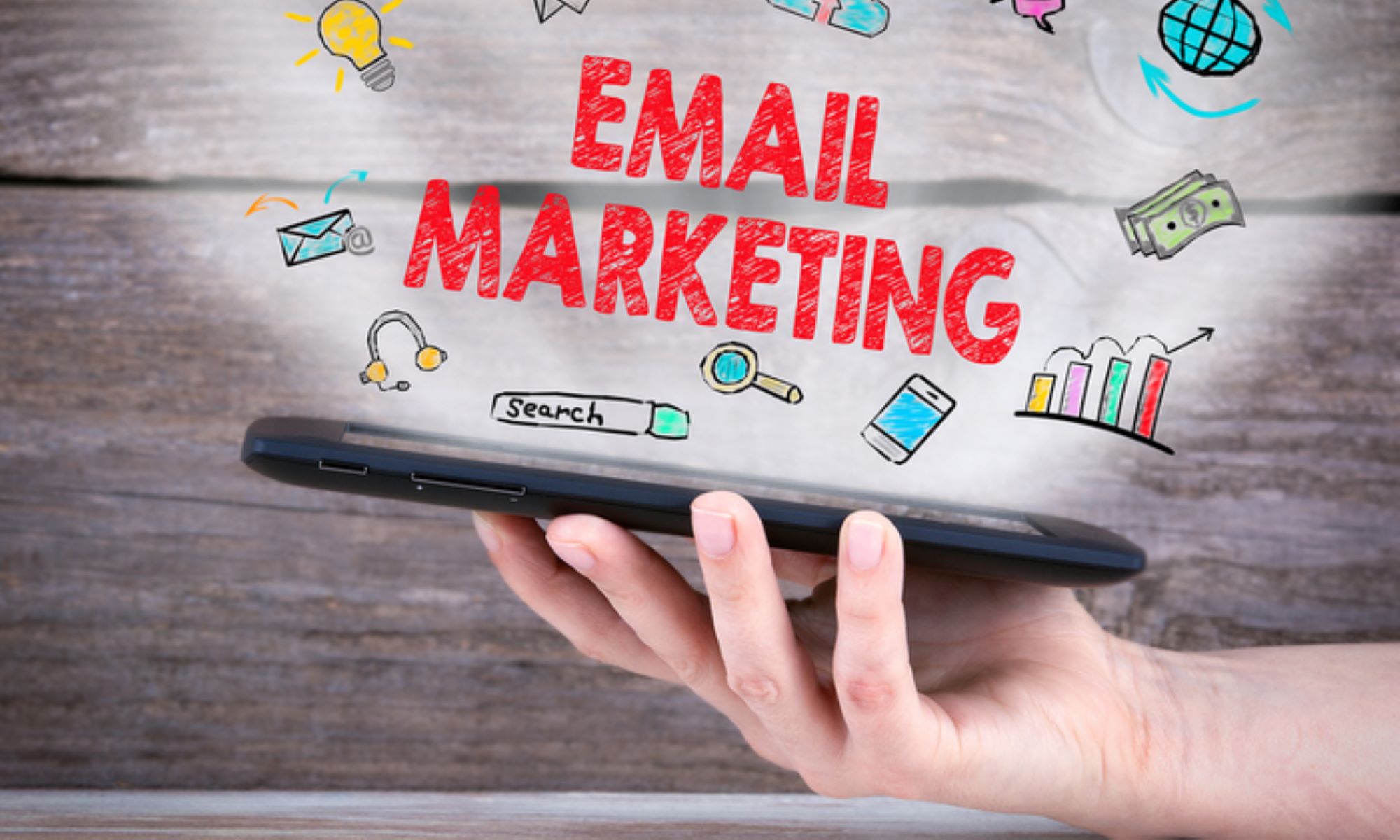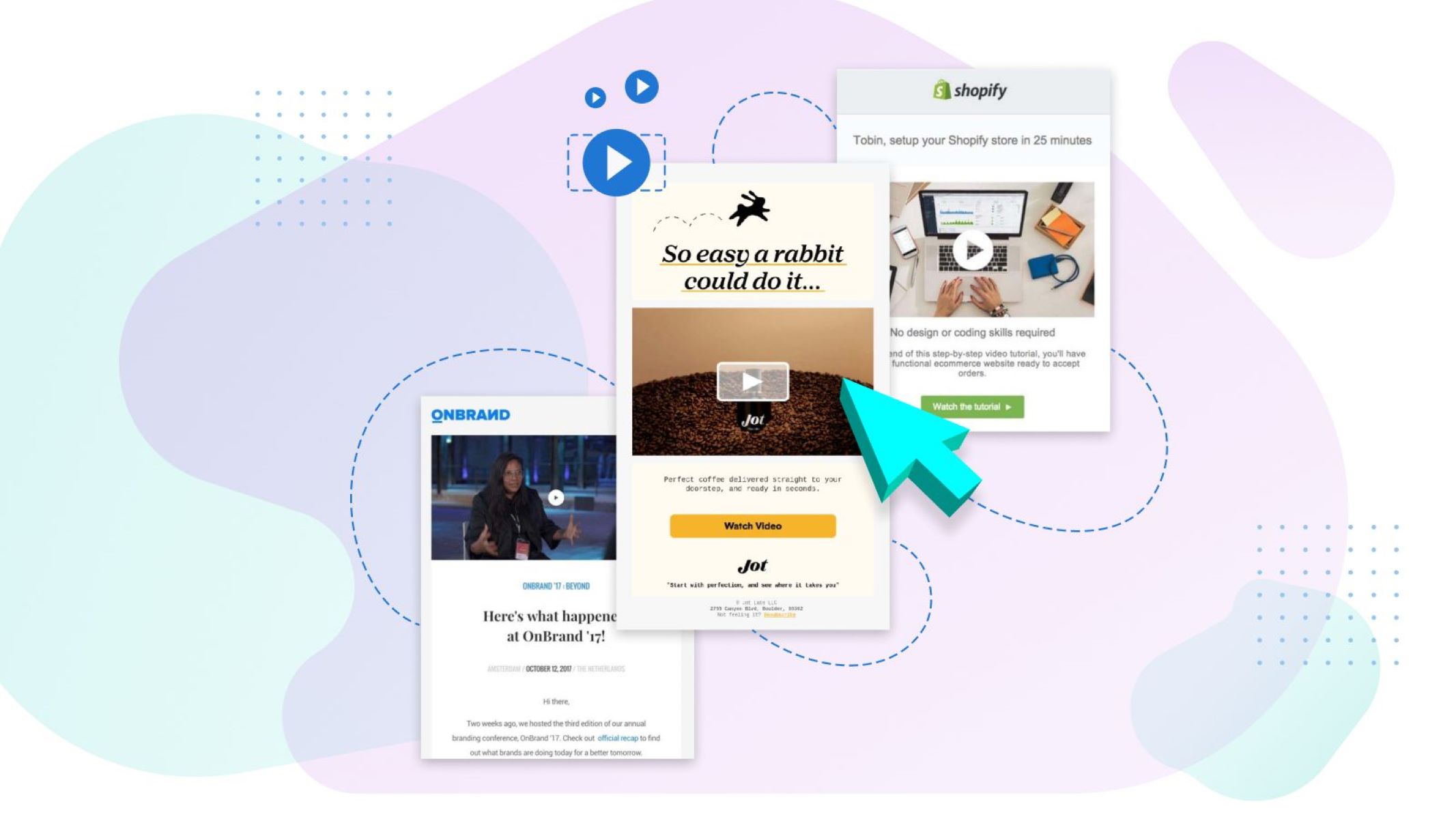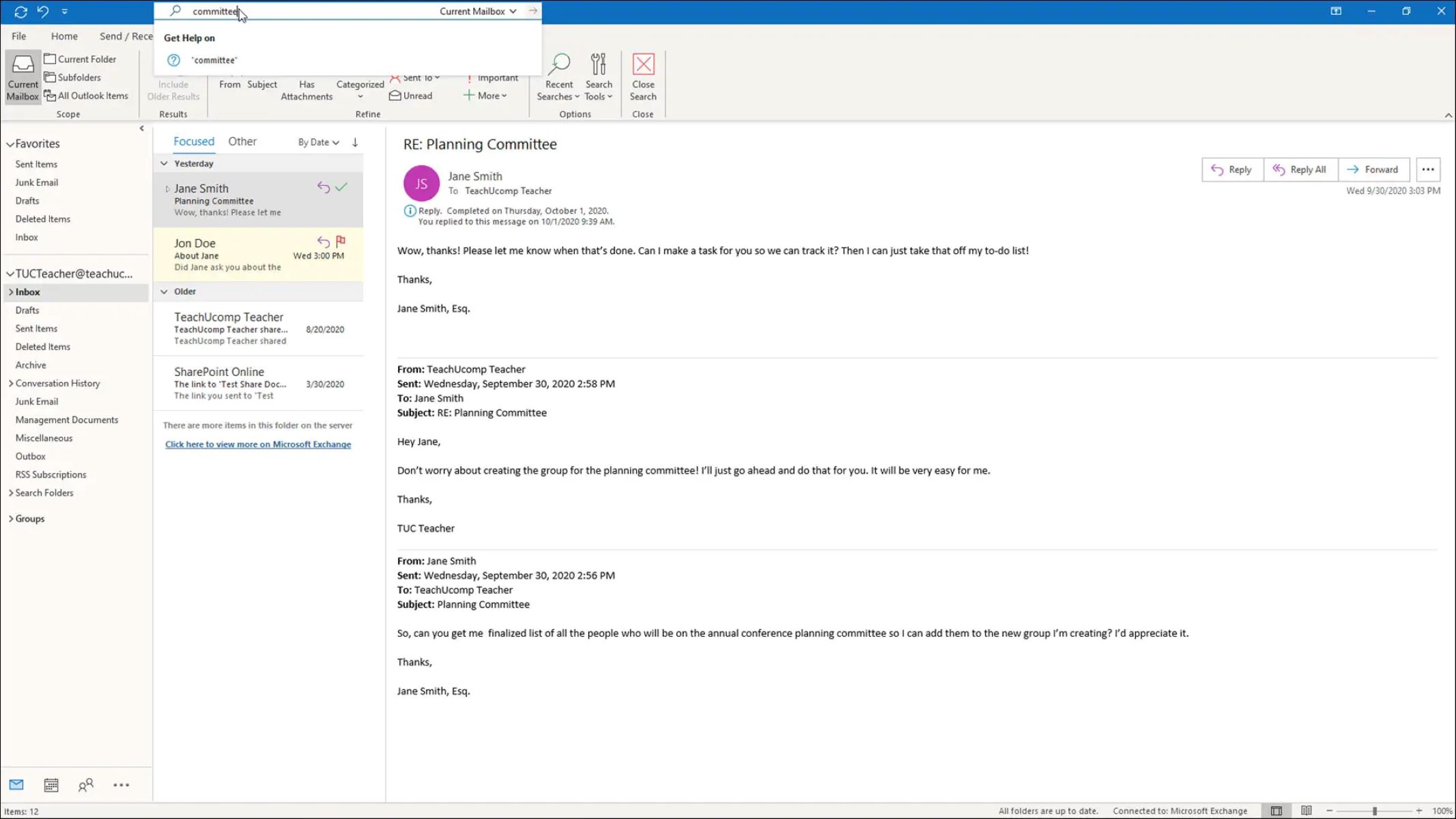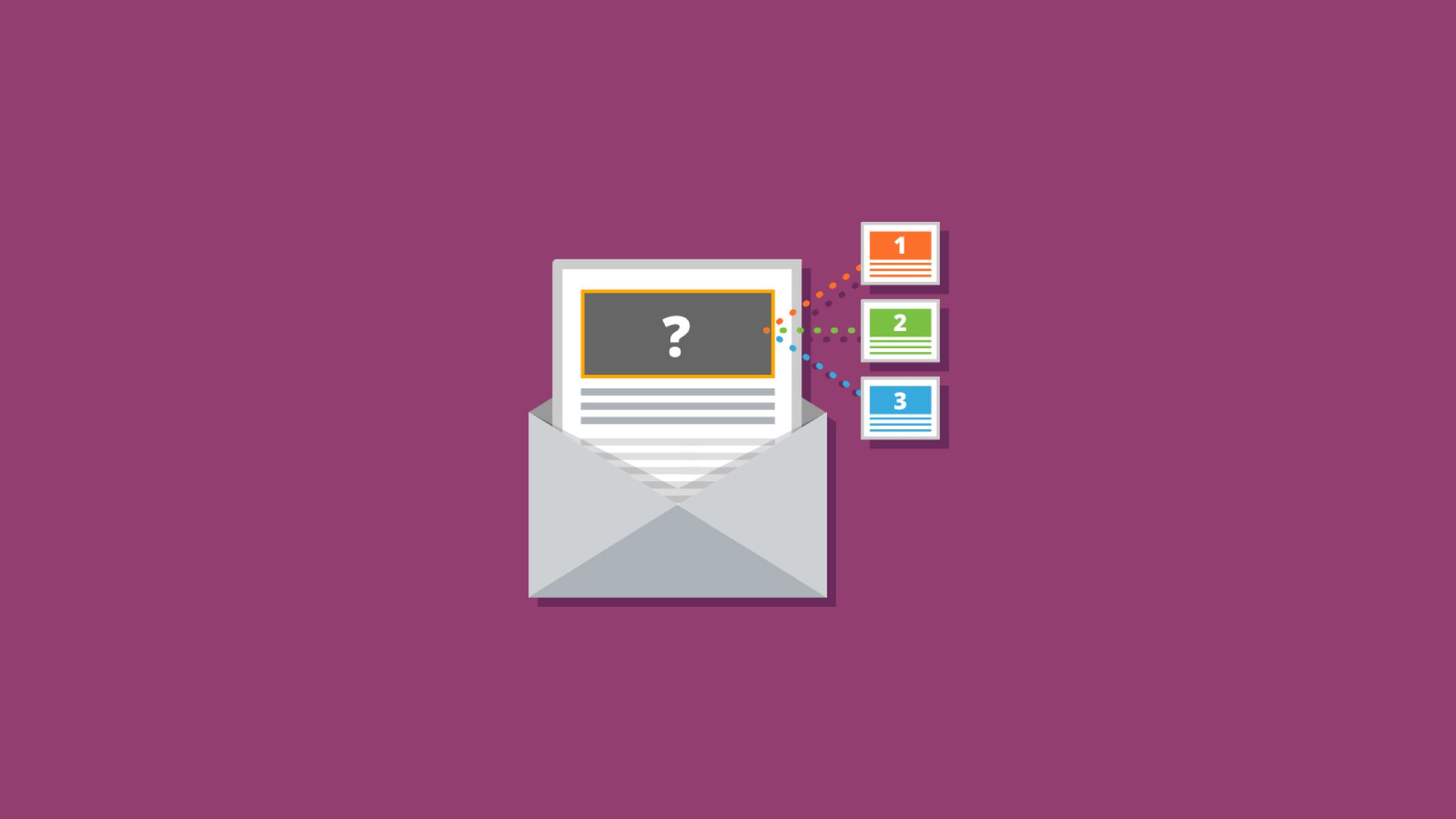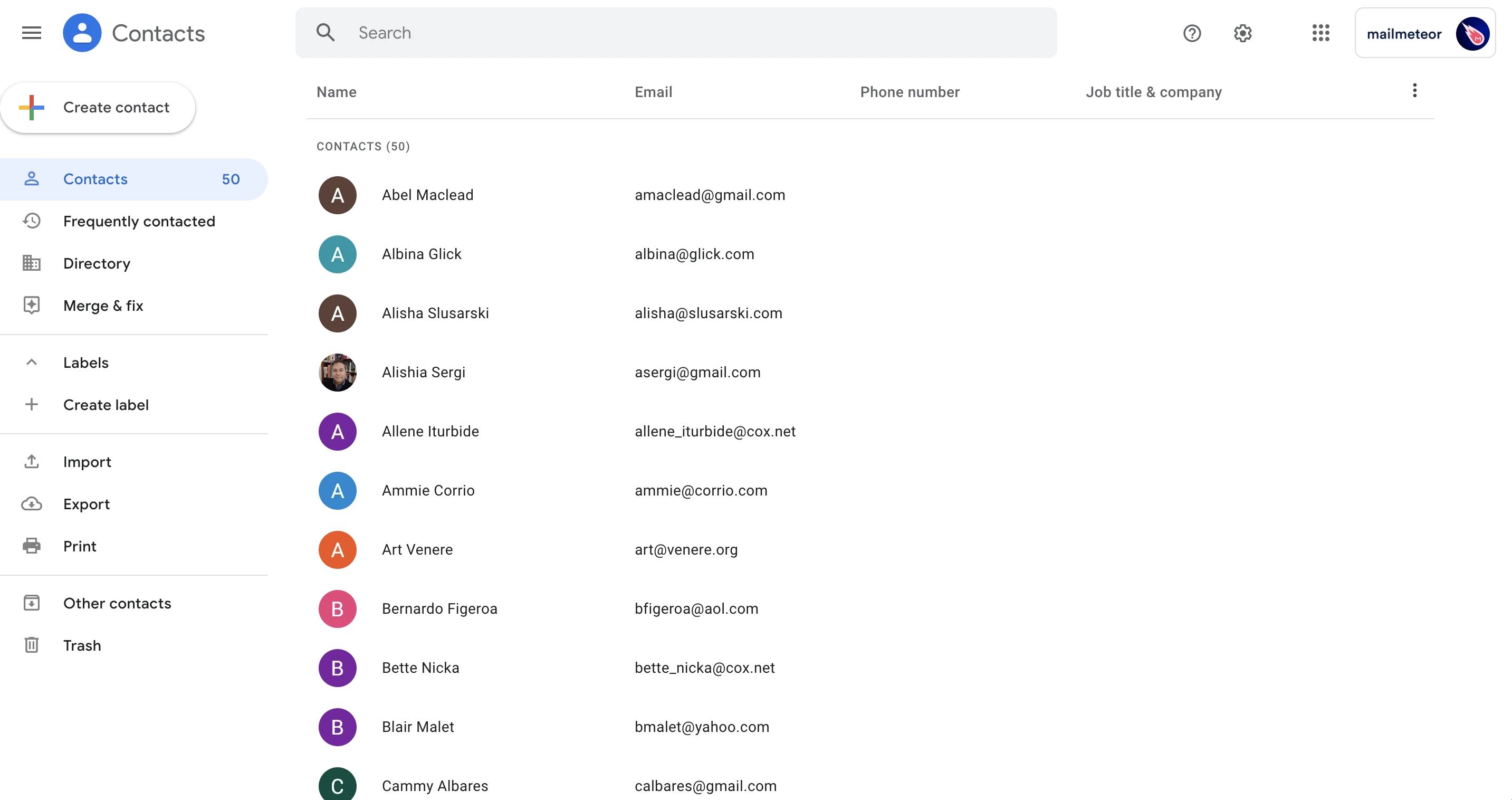Why Email Marketing is Important for Your Business
Email marketing has emerged as one of the most powerful and effective digital marketing strategies, providing businesses with a direct and personalized way to connect with their audience. While social media and other channels are important, email marketing remains a cornerstone for building customer relationships and driving conversions. Here are some key reasons why email marketing is crucial for your business:
- Direct communication: Email allows you to reach your audience right in their inbox, ensuring your message receives maximum visibility. Unlike social media posts that can easily get lost in users’ feeds, emails have a higher chance of being opened and read.
- Personalized messaging: With email marketing, you can tailor your messages based on user preferences, demographics, and past interactions with your brand. This personalized approach creates a sense of connection and makes your audience more receptive to your offers.
- Cost-effective marketing solution: Compared to other marketing channels, email marketing offers an excellent return on investment. The costs associated with email campaigns are typically lower, allowing businesses of all sizes to implement effective marketing strategies without breaking the bank.
- Increased conversions and sales: Emails have proven to be an effective tool for driving conversions. By leveraging persuasive copywriting, eye-catching design, and engaging calls to action, you can encourage recipients to take the desired actions, such as making a purchase or signing up for a service.
- Customer retention and loyalty: Email allows you to nurture customer relationships over time by providing valuable content, exclusive offers, and personalized recommendations. By staying top-of-mind and building trust, you can foster customer loyalty and drive repeat business.
- Measurable results and insights: Email marketing provides valuable analytics and insights that help you measure and evaluate the success of your campaigns. You can track metrics such as open rates, click-through rates, and conversion rates, allowing you to optimize your strategies for better results.
These are just a few reasons why email marketing is essential for your business. By implementing effective email campaigns, you can build a strong brand presence, drive customer engagement, and ultimately boost your bottom line.
How to Build an Email Marketing List
Building an email marketing list is a fundamental step in creating a successful email marketing campaign. The larger and more engaged your list, the greater your chances of achieving your marketing goals. Here are some strategies to help you build an effective email marketing list:
- Create valuable lead magnets: Offer a free resource, such as an e-book, checklist, or webinar, that provides value to your target audience. In exchange, ask users to provide their email addresses to access the resource. This not only adds subscribers to your list but also positions you as an expert in your field.
- Optimize your website: Place prominent sign-up forms on your website to capture visitor information. Use compelling call-to-action buttons and clearly communicate the benefits of joining your email list. Experiment with different placements, such as sidebar widgets, pop-ups, or exit-intent forms, to maximize your conversions.
- Encourage social media followers to subscribe: Leverage your social media presence to promote your email list. Provide teasers about exclusive content or special offers that are only available to subscribers. Direct users to a dedicated landing page where they can easily sign up.
- Run contests and giveaways: Host contests or giveaways that require participants to provide their email addresses for entry. This incentivizes users to join your list while generating excitement and engagement. Make sure the prize aligns with your target audience’s interests to attract relevant subscribers.
- Participate in industry events and webinars: Explore opportunities to collaborate with industry influencers or host webinars to showcase your expertise. Embed sign-up forms within event registration pages or webinar landing pages to capture email addresses from interested participants.
- Collect email addresses offline: If you have a physical store or attend trade shows and conferences, have sign-up sheets available for visitors to provide their email addresses. You can also run contests or offer exclusive discounts for in-store customers who join your email list.
Remember, building a quality email marketing list takes time and effort. Focus on attracting subscribers who are genuinely interested in your offerings and nurturing those relationships with valuable content and personalized interactions. With a growing and engaged email list, you’ll be well-positioned to drive conversions and achieve your marketing objectives.
Crafting Compelling Email Subject Lines
The subject line of an email is the first impression you make on your subscribers. A well-crafted subject line can entice recipients to open your email, while a lackluster one can send it straight to the trash folder. Here are some tips to help you craft compelling email subject lines:
- Keep it concise: Your subject line should be short and to the point. Aim for around 4-7 words, or about 50 characters, to ensure it appears in full on mobile devices and doesn’t get cut off in the inbox preview.
- Be specific and relevant: Clearly convey the value or benefit of opening the email. Use keywords that resonate with your audience and align with the content inside the email. Personalization, such as including the recipient’s name, can also grab attention.
- Use urgency or scarcity: Creating a sense of urgency or scarcity can drive action. Use words like “limited time offer,” “exclusive,” or “last chance” to encourage recipients to open your email now rather than later.
- Ask a compelling question: Pose a thought-provoking question that piques curiosity and engages the recipient. This can be an effective way to spark interest and make the recipient curious to know the answer or solution inside the email.
- Incorporate numbers or statistics: Numerical figures tend to catch the eye and give a sense of structure and value. Consider using numbers or statistics in your subject line to highlight the key benefits or insights offered in the email.
- Create a sense of exclusivity: People are naturally attracted to exclusive offers or information. Use words like “exclusive,” “invitation-only,” or “members-only” to make the recipient feel special and increase their desire to open the email.
- Use power words: Certain words evoke emotions and grab attention. Words like “amazing,” “unforgettable,” “ultimate,” or “essential” can create excitement and make your email stand out in a crowded inbox.
- Avoid spam triggers: Stay away from using all caps, excessive exclamation marks, or overly salesy language that may trigger spam filters. Instead, focus on creating subject lines that are informative, enticing, and genuine.
Remember to test different subject lines and analyze open rates to understand what resonates best with your audience. By crafting compelling subject lines, you can increase the likelihood of your emails being opened and engaged with, ultimately leading to higher conversions and success for your email marketing campaigns.
Designing Engaging Email Templates
The design of your email templates plays a crucial role in capturing your readers’ attention and delivering your message effectively. An engaging email template not only enhances the visual appeal but also improves the user experience. Here are some tips for designing captivating email templates:
- Keep it simple and clutter-free: A clean and uncluttered design is essential for a professional and visually appealing email. Avoid overcrowding your template with too many elements or excessive text. Use white space strategically to ensure a balanced and inviting layout.
- Use a responsive design: With the majority of people accessing emails on their mobile devices, it’s crucial to design templates that are mobile-friendly and responsive. Ensure that your emails adapt and display correctly on different screen sizes, providing an optimal viewing experience for all recipients.
- Include eye-catching visuals: Incorporate compelling visuals, such as high-quality images or graphics, to grab the reader’s attention. Visuals can help convey your message effectively and create a memorable impression. However, make sure your images are optimized for quick loading and always include alt text for accessibility.
- Use hierarchy and formatting: Use headings, subheadings, and bullet points to organize your content and guide readers’ attention. Formatting elements such as bold, italics, and color can be used to highlight important information or calls to action. Remember to maintain consistency in font styles, sizes, and colors throughout the email.
- Optimize for skimming: Most readers quickly scan emails before deciding to read in detail, so make key information easily scannable. Use short paragraphs, bullet points, and clear headings to highlight important points. Ensure that the most crucial information is visible in the preview pane or above the fold.
- Brand consistency: Ensure that your email templates reflect your brand identity, including colors, logos, and fonts. Consistency in visuals and branding helps reinforce your brand image and builds trust with your audience. Be mindful of aligning your email design with your website and other marketing materials.
- Add interactive elements: Engage your audience by incorporating interactive elements into your emails. This can include buttons for social sharing, clickable sliders or carousels, or even embedded video content. These interactive components can enhance the user experience and boost engagement with your emails.
- Test and optimize: Prioritize testing your email templates across different devices, email clients, and browsers to ensure a seamless experience for all recipients. Pay attention to load times, rendering issues, and overall usability. Analyze metrics such as click-through rates and conversions to identify areas for improvement and optimize your templates accordingly.
By following these design best practices, you can create visually appealing, user-friendly email templates that effectively convey your message and engage your audience. Remember to continuously test and optimize your templates to ensure maximum impact and success for your email marketing campaigns.
Personalizing Your Email Communications
Personalization is a key component of successful email marketing. Gone are the days of generic mass emails. Today, subscribers expect personalized and relevant content tailored to their needs and preferences. Here are some strategies to help you personalize your email communications:
- Segment your email list: Divide your subscribers into specific segments based on characteristics such as demographics, purchase history, or engagement level. This allows you to send targeted emails that resonate with each group’s interests and needs.
- Use dynamic content: Utilize dynamic content blocks that change based on the recipient’s profile or behavior. This allows you to deliver personalized content within the same email template, catering to different segments with relevant offers or recommendations.
- Address subscribers by name: Include the recipient’s name in the email subject line and greeting. This simple personal touch helps create a sense of familiarity and connection, enhancing the chances of engagement.
- Refer to past interactions: Reference previous purchases, downloads, or website visits to tailor the content of your emails. Offer related products or exclusive promotions based on the recipient’s history to show that you understand their preferences and value their loyalty.
- Send triggered emails: Set up automated emails triggered by specific actions or events, such as abandoned cart emails or birthday greetings. These timely and relevant messages show that you are paying attention to your subscribers’ actions and deliver content personalized to their specific situation.
- Ask for feedback and preferences: Incorporate surveys or preference centers within your emails to gather insights from subscribers. Use this information to better understand their preferences and tailor future communications accordingly.
- Provide relevant recommendations: Leverage the power of recommendation engines to offer personalized product recommendations based on the recipient’s purchase history or browsing behavior. This can increase engagement, conversions, and customer satisfaction.
- Use location-based targeting: Customize your emails based on the recipient’s location to deliver location-specific offers or event invitations. This personalization tactic can create a stronger connection with your audience and increase the relevance of your emails.
Personalizing your email communications shows your subscribers that you value them as individuals, rather than just another person on your list. By leveraging personalization strategies, you can enhance the customer experience, boost engagement, and ultimately drive better results for your email marketing campaigns.
Creating High-Quality Email Content
The success of your email marketing campaigns heavily relies on the quality of the content you deliver to your subscribers. Creating high-quality email content not only keeps your audience engaged but also drives conversions and builds long-lasting relationships. Here are some tips for creating compelling email content:
- Know your audience: Understand who your target audience is and what they’re interested in. Tailor your content to their needs, preferences, and pain points. The more you know about your audience, the better you can deliver content that resonates with them.
- Provide valuable information: Deliver content that adds value to your subscribers’ lives. Whether it’s educational articles, helpful tips, or industry insights, provide information that solves their problems or helps them achieve their goals. Position yourself as a trusted resource in your niche.
- Create engaging copy: Write clear, concise, and compelling copy that captures the reader’s attention from the start. Use storytelling techniques, descriptive language, and persuasive writing to capture your reader’s interest and keep them engaged throughout the email.
- Include visually appealing elements: Incorporate relevant visuals, such as images, infographics, or videos, to enhance the visual appeal of your emails. Visual content can effectively convey your message and make your emails more engaging. However, ensure that the visuals are optimized for quick loading and add value to the overall content.
- Add a clear call to action (CTA): Every email should have a purpose and a clear CTA that guides the reader towards the desired action. Make your CTAs stand out visually and use compelling language to encourage recipients to take the intended action, whether it’s making a purchase, signing up for an event, or downloading a resource.
- Update your content regularly: Keep your email content fresh and relevant by regularly updating it. Share timely news, industry trends, or seasonal offers to keep your subscribers engaged and interested in opening your emails. Stale or outdated content can lead to disengagement and unsubscribes.
- Personalize where possible: Use the recipient’s name, past interactions, or purchase history to personalize the content of your emails. Tailored content creates a sense of individual attention and relevance, making your subscribers more likely to engage with your emails.
- Proofread and test: Before hitting the send button, double-check your copy for any grammatical or spelling errors. Test your emails across different devices, email clients, and browsers to ensure optimal rendering and a seamless user experience. A well-polished and error-free email reflects positively on your brand and enhances the credibility of your content.
By focusing on delivering high-quality email content, you can capture your subscribers’ attention, build trust, and establish a strong connection. With valuable and engaging content, you’ll increase the chances of driving conversions and achieving your email marketing goals.
Implementing Effective Calls to Action
A call-to-action (CTA) is a crucial element in your email marketing campaigns. It prompts your subscribers to take a specific action, such as making a purchase, signing up for a webinar, or downloading a resource. Implementing effective CTAs can significantly impact your email engagement and conversion rates. Here are some tips for creating compelling CTAs:
- Use action-oriented language: Your CTA should use clear and direct language that prompts immediate action. Use strong verbs and phrases that create a sense of urgency or excitement, such as “Shop now,” “Register today,” or “Download your free guide.”
- Make CTAs visually prominent: Design your CTAs to stand out visually within your email. Use contrasting colors, bold fonts, or buttons to ensure they catch the reader’s attention. Position them strategically within the email, such as above the fold or at the end of a compelling section.
- Create a sense of scarcity or exclusivity: Add urgency to your CTAs by incorporating words like “limited time offer,” “exclusive access,” or “while supplies last.” This creates a fear of missing out and motivates recipients to take immediate action.
- Offer incentives or benefits: Clearly communicate the value or benefits the recipient will receive by clicking on your CTA. Whether it’s a discount, a free trial, or access to exclusive content, highlight the advantages to encourage engagement.
- Keep it concise: Keep your CTA short and to the point. A brief and straightforward CTA is easier for readers to comprehend and act upon. Avoid using lengthy or complex phrases that may confuse or discourage the recipient.
- Use engaging visuals or icons: Incorporate eye-catching icons or graphics alongside your CTAs to draw attention and reinforce the action you want the recipient to take. Visual elements can make your CTAs more visually appealing and enticing.
- Ensure mobile responsiveness: With the majority of emails being viewed on mobile devices, it’s crucial to make your CTAs mobile-friendly and easy to tap. Optimize their size, spacing, and placement to ensure a seamless user experience on any device.
- Test and analyze: A/B test different variations of your CTAs to determine what performs best with your audience. Test different colors, wording, placement, and even button shapes to optimize your CTAs for maximum conversions. Analyze click-through rates and other relevant metrics to gauge their effectiveness.
Remember that the effectiveness of your CTAs is influenced by various factors, including your target audience, industry, and the specific goal of the email. As you test and refine your CTAs over time, you’ll gain insights into what drives the highest engagement and conversions, enabling you to fine-tune your email marketing strategy.
Analyzing Email Marketing Metrics
Analyzing email marketing metrics is essential for understanding the effectiveness of your campaigns and making data-driven decisions to improve your email marketing strategy. By monitoring relevant metrics, you can gain valuable insights into subscriber behavior, identify areas for improvement, and optimize your campaigns for better results. Here are some key email marketing metrics to analyze:
- Open rate: The open rate measures the percentage of recipients who opened your email. This metric can give you insights into the effectiveness of your subject lines and the overall interest in your content. A low open rate may indicate the need to improve your subject lines or sender reputation.
- Click-through rate (CTR): The CTR measures the percentage of recipients who clicked on a link in your email. This metric indicates the level of engagement and interest in your content. A high CTR suggests that your email’s content and calls to action are resonating well with your audience.
- Conversion rate: The conversion rate measures the percentage of recipients who completed a desired action, such as making a purchase, filling out a form, or subscribing to a service. This metric is a direct indicator of the effectiveness of your email in driving the desired outcome. Analyze this metric to identify areas for improvement in your email content or CTAs.
- Bounce rate: The bounce rate measures the percentage of emails that were not delivered to the recipients’ inboxes. Bounces can be either “hard” (permanent delivery failures) or “soft” (temporary delivery issues). A high bounce rate may indicate issues with the quality of your email list or the health of your email infrastructure.
- Unsubscribe rate: The unsubscribe rate measures the percentage of recipients who chose to unsubscribe from your email list after receiving a particular email. While some level of unsubscribes is natural, a consistently high unsubscribe rate may suggest the need to reassess your email content, frequency, or targeting.
- ROI (Return on Investment): ROI measures the financial return you generate from your email marketing efforts. It helps you understand the effectiveness of your campaigns in terms of revenue generation and the overall impact on your bottom line. Calculate ROI by comparing the revenue generated from your email campaigns to the costs associated with running those campaigns.
- List growth rate: The list growth rate measures how quickly your email list is expanding. This metric helps you understand the success of your efforts in acquiring new subscribers and retaining existing ones. A healthy list growth rate indicates that your email marketing strategy is effectively attracting and engaging your target audience.
- Device and client insights: Analyzing the devices and email clients your subscribers use can provide valuable insights into how to optimize your email design and user experience. Monitor this data to ensure that your emails render well across different devices and email clients, allowing for a seamless user experience.
Regularly monitoring and analyzing these email marketing metrics will help you understand the strengths and weaknesses of your campaigns, identify opportunities for improvement, and make data-backed decisions to enhance your email marketing strategy. Use these insights to refine your content, targeting, design, and overall approach to achieve optimal results.
A/B Testing Your Email Marketing Campaigns
A/B testing is a vital technique in email marketing that allows you to compare and analyze different variations of your emails to determine which ones perform better. It enables you to make data-driven decisions and optimize your email campaigns for maximum engagement and conversions. Here’s how you can effectively carry out A/B testing:
- Select one variable to test: Identify the specific element you want to test, such as the subject line, CTA, email copy, or design. Focus on one variable at a time to obtain accurate and measurable results.
- Create two distinct variations: Develop two versions of your email, with one element changed between them. For example, you could test two different subject lines or two different CTAs. Ensure that the rest of the email content remains identical.
- Split your audience: Divide your email list randomly into two segments. Send version A of the email to one segment and version B to the other. The size of each segment will depend on factors such as the size of your list and the statistical significance you want to achieve.
- Define your success metric: Determine the key performance indicator (KPI) that you will use to measure success. It could be open rate, click-through rate, conversion rate, or any other metric that aligns with your campaign’s objectives.
- Track and measure results: Monitor the performance of each email variation and track relevant metrics. Use an email marketing platform or analytics tool to gather data on opens, clicks, conversions, and other engagement metrics. Compare the results to determine which variation performs better.
- Analyze and draw insights: Analyze the data to identify patterns and trends. Ask yourself questions such as: Which subject line or CTA generated higher open rates or click-through rates? Did one variation lead to more conversions? Use these insights to understand what resonates best with your audience and apply the findings to future campaigns.
- Iterate and repeat: Based on the insights gained from your A/B test, apply the winning variation to future emails to improve your overall performance. Continuously test and refine different elements of your emails to optimize your campaigns and drive better results.
A/B testing provides valuable insights into what works and what doesn’t in your email marketing campaigns. It allows you to fine-tune your content, design, and messaging based on real-time data, leading to increased engagement, conversions, and overall campaign success.
Automating Your Email Marketing Workflow
Automating your email marketing workflow is a powerful strategy that can save you time, streamline your processes, and improve the effectiveness of your campaigns. By leveraging automation tools and techniques, you can deliver timely and relevant messages to your audience, nurture leads, and drive conversions. Here’s how to effectively automate your email marketing workflow:
- Segment your audience: Divide your email list into distinct segments based on demographics, preferences, behavior, or any other relevant criteria. This segmentation allows you to send targeted and personalized emails to different groups of subscribers.
- Use triggered emails: Set up automated emails that are triggered by specific actions or events, such as welcome emails for new subscribers, abandoned cart reminders, or post-purchase follow-ups. Triggered emails provide timely and relevant information to recipients, nurturing them through the customer journey.
- Create drip campaigns: Develop a series of automated emails that are sent at predetermined intervals to engage and nurture leads. Drip campaigns can be designed to provide educational content, showcase product features, or deliver a sequence of promotional offers to move subscribers closer to making a purchase.
- Personalize your emails: Use dynamic content and merge tags to personalize your automated emails. Address recipients by their names, include recommendations based on their past purchases or browsing behavior, and tailor the content to their specific interests and preferences.
- Implement lead scoring: Assign scores to your leads based on their engagement level, interactions with your emails, and website behavior. This helps you identify high-value leads and trigger targeted emails or sales outreach when they reach a certain threshold, increasing the chances of conversion.
- Integrate with your CRM or e-commerce platform: Connect your email marketing software with your customer relationship management (CRM) or e-commerce platform to synchronize data and automate workflows. This integration enables you to track customer interactions, segment your audience more effectively, and personalize your emails based on real-time information.
- Analyze and optimize: Regularly review the performance metrics of your automated emails, such as open rates, click-through rates, and conversions. Analyze the data to identify areas for improvement and optimize your automated workflows for better results. Experiment with different subject lines, CTAs, or content to refine your automated email sequences.
- Monitor and maintain: Continuously monitor the health and performance of your automated email workflows. Keep an eye on any errors or issues that may arise, and make necessary adjustments to ensure smooth operation. Regularly update and refresh your automated emails to keep them relevant and up-to-date.
By automating your email marketing workflow, you can deliver personalized and targeted messages at scale, nurture leads efficiently, and maximize the impact of your campaigns. Embrace automation to optimize your resources, improve engagement, and drive better results for your business.
Ensuring Email Deliverability
Ensuring email deliverability is crucial for the success of your email marketing campaigns. If your emails don’t reach your subscribers’ inboxes, all your efforts in crafting compelling content and personalized messages go to waste. Here are some best practices to follow to improve your email deliverability:
- Build a quality email list: Start with a clean and permission-based email list. Avoid purchasing or using email lists that are not obtained organically. Focus on attracting engaged and interested subscribers who have willingly opted in to receive communication from your brand.
- Authenticate your domain: Implement email authentication protocols such as SPF (Sender Policy Framework) and DKIM (DomainKeys Identified Mail) to verify that your emails are sent from a legitimate and authorized source. This helps improve your sender reputation and enhances the chances of your emails reaching the inbox.
- Monitor and maintain a good sender reputation: Your sender reputation plays a significant role in email deliverability. ISPs (Internet Service Providers) evaluate the reputation of your domain and IP address to determine whether to deliver your emails to the inbox or spam folder. Maintain a good sender reputation by sending relevant and engaging emails, minimizing complaints, and monitoring your sender score.
- Use a reputable email service provider (ESP): Choose an ESP with a good reputation for deliverability. Reputable ESPs have established relationships with ISPs, comply with industry best practices, and can provide deliverability insights and support.
- Follow email best practices: Adhere to email best practices to maintain a positive sender reputation. Avoid using spam trigger words, misleading subject lines, or excessive use of capital letters and exclamation marks. Provide clear unsubscribe instructions and honor unsubscribe requests promptly.
- Test email deliverability: Regularly test your email deliverability by sending test emails to various email clients and ISPs. Monitor inbox placement rates and make necessary adjustments to optimize deliverability.
- Manage bounces and inactive subscribers: Regularly clean your email list by removing invalid email addresses and managing bounces. High bounce rates and inactive subscribers can negatively impact your deliverability. Implement processes to re-engage inactive subscribers or remove them from your list if necessary.
- Monitor and address spam complaints: Keep an eye on spam complaints and take them seriously. Analyze the reasons behind the complaints and make necessary improvements to your email content, frequency, or targeting to reduce the likelihood of being marked as spam.
- Maintain a healthy balance of engagement: ISPs consider recipient engagement as a factor for email deliverability. Aim to maintain a healthy balance of opens, clicks, and positive interactions with your emails. Engage your audience with relevant content, personalization, and targeted offers to keep them interested and involved.
By following these deliverability best practices, you can enhance the chances of your emails reaching the intended recipients’ inboxes, improving your engagement rates, and achieving your email marketing goals.
Managing Unsubscribes and Bounce Rates
Managing unsubscribes and bounce rates is an important aspect of maintaining a healthy email marketing list and ensuring the effectiveness of your campaigns. By properly handling unsubscribes and addressing bounce rates, you can improve your sender reputation, increase engagement, and deliver relevant content to interested recipients. Here are some strategies to effectively manage unsubscribes and bounce rates:
- Make unsubscribing easy and visible: Provide a clear and prominent unsubscribe link or button in every email. Make the process hassle-free, requiring only a few clicks to opt out. Honoring unsubscribe requests promptly and maintaining transparent communication can help build trust with your audience.
- Offer alternative subscription options: Instead of losing subscribers entirely, provide alternative subscription options. For example, give recipients the option to manage their email preferences or subscribe to specific types of content. This allows them to tailor their email experience to their interests and helps retain their engagement.
- Analyze unsubscribe feedback: Pay attention to the feedback provided by unsubscribing users. Some may offer valuable insights into their reasons for unsubscribing, such as irrelevant content, high email frequency, or poor user experience. Analyze this feedback and use it to improve your email strategy and address any potential issues.
- Regularly clean your email list: Remove email addresses that consistently bounce from your list. High bounce rates can negatively impact your sender reputation and deliverability. Implement processes to identify and suppress or remove invalid or inactive email addresses to maintain a clean and engaged subscriber list.
- Monitor and address hard bounces: Hard bounces are permanent delivery failures due to invalid or non-existing email addresses. Monitor your email campaign reports and take immediate action to remove hard bounces from your list. Continuing to send to invalid addresses can harm your deliverability and result in being blacklisted by ISPs.
- Implement double opt-in: Consider implementing a double opt-in process where subscribers confirm their email address and intent to join your list. This ensures that only interested users with valid email addresses become part of your list and reduces the likelihood of spam complaints and bounce rates.
- Segment and target your emails: Optimize your email content and targeting to reduce the chances of unsubscribes and bounces. Delivering relevant and personalized content to specific segments of your audience increases engagement and decreases the likelihood of recipients losing interest or marking emails as spam.
- Monitor and improve email engagement: Regularly analyze engagement metrics, such as open rates and click-through rates, to determine the effectiveness of your emails. Experiment with different subject lines, content, and calls-to-action to increase engagement and reduce unsubscribes and bounces.
- Monitor and assess campaign frequency: Review your email campaign frequency to ensure it aligns with the expectations and preferences of your subscribers. Sending emails too frequently can lead to unsubscribes, while infrequent communication may cause disengagement. Find the right balance and adjust your sending frequency based on subscriber feedback and engagement metrics.
By managing unsubscribes and bounce rates effectively, you can maintain a clean and engaged subscriber list, preserve your sender reputation, and optimize the success of your email marketing campaigns.
Avoiding Common Email Marketing Mistakes
Email marketing can be a powerful tool for driving engagement and conversions, but it’s important to avoid common mistakes that can hinder the success of your campaigns. By being aware of these pitfalls and implementing best practices, you can ensure that your email marketing efforts are effective and impactful. Here are some common email marketing mistakes to avoid:
- Not obtaining proper consent: Always obtain proper consent before adding someone to your email list. Sending emails to recipients who haven’t opted in or purchased from you can result in spam complaints and damage your sender reputation.
- Overusing or underutilizing personalization: Personalization is important, but using it too frequently or incorrectly can backfire. Avoid generic personalizations that feel forced, and ensure that you’re using personalization in a genuine and relevant manner.
- Sending emails without testing: Failing to test your emails across different devices, email clients, and browsers can lead to formatting issues, broken links, or design problems. Always test your emails to ensure that they appear as intended and offer a seamless user experience.
- Not optimizing for mobile devices: With a significant portion of email opens occurring on mobile devices, it’s essential to optimize your emails for mobile viewing. Neglecting mobile optimization can result in poor user experience, decreased engagement, and lower conversion rates.
- Overloading emails with excessive content: Don’t overwhelm your subscribers with excessive content. Keep your emails concise, focused, and easy to skim. Use clear sections, headers, and bullet points to help readers quickly find the information they’re most interested in.
- Using misleading subject lines: Avoid using misleading subject lines that don’t accurately represent the content of your emails. Deceptive subject lines can result in a loss of trust and increase the likelihood of your emails being marked as spam.
- Ignoring email analytics and metrics: Failing to analyze email metrics means missing out on valuable insights and opportunities for improvement. Regularly monitor and analyze email open rates, click-through rates, conversions, and other relevant metrics to optimize your campaigns and drive better results.
- Being inconsistent with your emails: Inconsistent email frequency, content, or design can confuse and frustrate your subscribers. Establish a consistent schedule and maintain a cohesive brand voice and design to build trust and familiarity with your audience.
- Failing to provide an easy unsubscribe option: Make sure your unsubscribe process is simple and easy to find. Failing to provide an easy way for subscribers to opt out can result in increased spam complaints and negatively impact your sender reputation.
- Not segmenting your email list: Avoid sending generic emails to your entire list. Segment your email list based on demographics, preferences, location, or past interactions to deliver targeted and relevant content to specific groups of subscribers.
By avoiding these common email marketing mistakes, you can maximize the effectiveness of your campaigns, improve subscriber engagement, and build stronger relationships with your audience. Regularly review your email marketing practices and strive for continuous improvement to achieve the best possible results.
Email Marketing Best Practices for Success
Email marketing can be a highly effective strategy for engaging with your audience and driving conversions. To ensure the success of your email marketing campaigns, it’s important to follow industry best practices. Here are some key email marketing best practices to help you achieve optimal results:
- Build and maintain a quality email list: Focus on growing a permission-based email list of engaged subscribers who have willingly opted in to receive communication from your brand. Regularly update and clean your list to ensure its quality and relevance.
- Segment your audience: Divide your email list into specific segments based on demographics, preferences, or past interactions. This allows you to send targeted and personalized emails that resonate with each group, resulting in higher engagement and conversions.
- Create compelling subject lines: Craft attention-grabbing subject lines that accurately represent the content of your email and entice recipients to open it. Test different subject line variations to determine what resonates best with your audience.
- Deliver valuable and engaging content: Provide relevant and valuable content that meets the needs and interests of your subscribers. Offer educational resources, exclusive offers, or industry insights that demonstrate your expertise and set you apart from competitors.
- Optimize for mobile: Optimize your emails for mobile devices to ensure they display correctly and offer a seamless user experience across various screen sizes and email clients. Pay attention to responsive design, font size, and button accessibility.
- Include clear and prominent calls to action (CTAs): Use compelling and visually appealing CTAs to guide recipients towards the desired action. Make them stand out and clearly communicate the benefits or value of taking that action.
- Avoid excessive promotional content: Strike a balance between promotional and non-promotional content. Too many sales-focused emails can lead to the loss of subscribers’ interest. Provide a mix of informative and promotional content to maintain engagement.
- Personalize your emails: Leverage personalization to create a more personalized and relevant experience for your subscribers. Address them by name, use segmentation to tailor content, and incorporate dynamic elements to ensure your emails resonate with individual recipients.
- Test and analyze: Regularly test different elements of your emails, such as subject lines, content, CTAs, and design. Analyze the data to identify what works best with your audience and use those insights to continuously optimize and improve your email marketing strategy.
- Comply with email regulations: Familiarize yourself with email marketing regulations, such as GDPR and CAN-SPAM, and ensure that your email campaigns comply with these regulations. This includes obtaining proper consent, providing clear unsubscribe options, and honoring recipient preferences.
- Maintain consistent branding: Ensure that your emails reflect your brand’s visual identity, including colors, typography, and logos. Consistency in branding helps reinforce recognition, trust, and professionalism.
By following these email marketing best practices, you can build stronger relationships with your audience, increase engagement, and achieve better results from your email marketing campaigns. Regularly evaluate and refine your strategies to stay ahead in an ever-evolving digital landscape.
Conclusion
Email marketing is a powerful tool for connecting with your audience, driving engagement, and achieving your marketing goals. By implementing the best practices outlined in this article, you can create effective and successful email marketing campaigns that deliver tangible results. From building a quality email list and crafting compelling content to personalizing your communications and analyzing your metrics, each step contributes to the overall success of your email marketing efforts. Additionally, avoiding common mistakes and staying up-to-date with industry trends will help you refine your strategies and optimize your campaigns over time. Remember to test and adapt your approaches based on the unique needs of your audience and business objectives.
As technology and consumer behavior continue to evolve, it is essential to stay informed about emerging trends and adapt your email marketing strategies accordingly. Regularly evaluate your performance metrics and adjust your tactics to align with the preferences and expectations of your subscribers.
By consistently providing value, being attentive to your audience’s needs, and maintaining a strong brand presence, you can build relationships, increase customer loyalty, and drive conversions. Email marketing remains a vital channel for businesses to connect with their audience and create lasting impacts. Embrace the power of email marketing and let it be a cornerstone in your digital marketing strategy.







